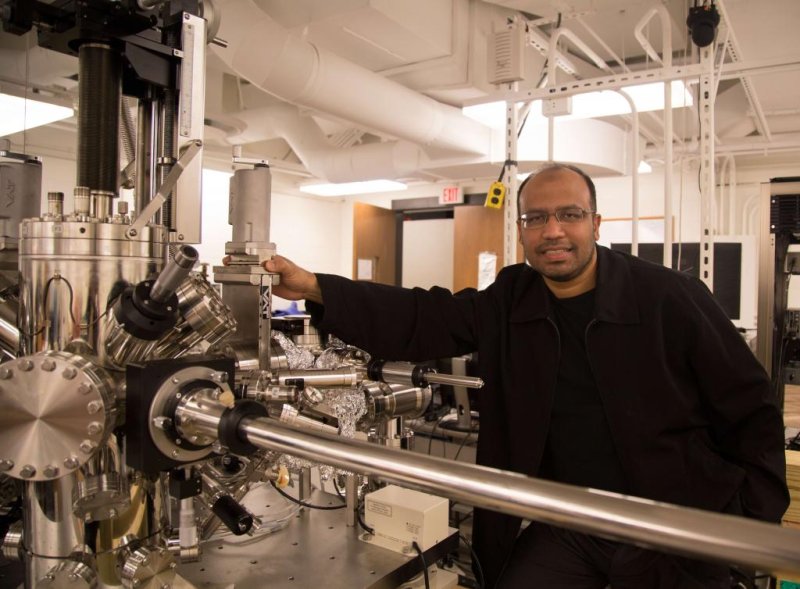M. Zahid Hasan and his group of scientists researched and simulated dozens of crystal structures before finding the one suitable for holding Weyl fermions. Once fashioned, the crystals were loaded into this two-story device known as a scanning tunneling spectromicroscope to ensure they matched theoretical specifications. Photo by Danielle Alio/Princeton University
PRINCETON, N.J., July 17 (UPI) -- Researchers have discovered a massless particle, which was first theorized 85 years ago and thought to be a possible building block for other subatomic particles.
The discovery of the Weyl fermion, conceived of by mathematician and physicist Hermann Weyl in 1929, could be a boon for electronics, researchers said. It could allow electricity to flow more freely and efficiently providing greater power, most notably for computers.
"The physics of the Weyl fermion are so strange, there could be many things that arise from this particle that we're just not capable of imagining now," M. Zahid Hasan, a professor of physics at Princeton University, said in a press release.
Based on Weyl's work, and their own intuition, the researchers theorized the fermions could exist inside a synthetic tantalum arsenide crystal they designed. The crystals were then inserted into a scanning tunneling spectromicroscope, which is cooled to near absolute zero and suspended from the ceiling to prevent even atom-sized vibrations. Based on the spectromicroscope, the crystals matched all of Weyl's theoretical specifications for the presence of the particle.
Once the specifications had been confirmed, researchers tested the crystals for the presence of the particle using high-energy, accelerator-based photon beams. The beams' shape, size and direction shifted when fired through the crystal, indicating the Weyl fermion was present in the crystal.
"After more than 80 years, we found that this fermion was already there, waiting. It is the most basic building block of all electrons," Hasan said. "It is exciting that we could finally make it come out following Weyl's 1929 theoretical recipe."
The researchers also found the particles can be used to create massless electrons that move quickly without being lost when they meet with an obstruction. The loss, called backscattering, hinders efficiency and generates heat in electronics. Because this doesn't happen with electrons created using Weyl fermions, the potential for their application in electronics and computers is large.
"It's like they have their own GPS and steer themselves without scattering," Hasan said. "They will move and move only in one direction since they are either right-handed or left-handed and never come to an end because they just tunnel through. These are very fast electrons that behave like unidirectional light beams and can be used for new types of quantum computing."
The study is published in Nature Communications.















